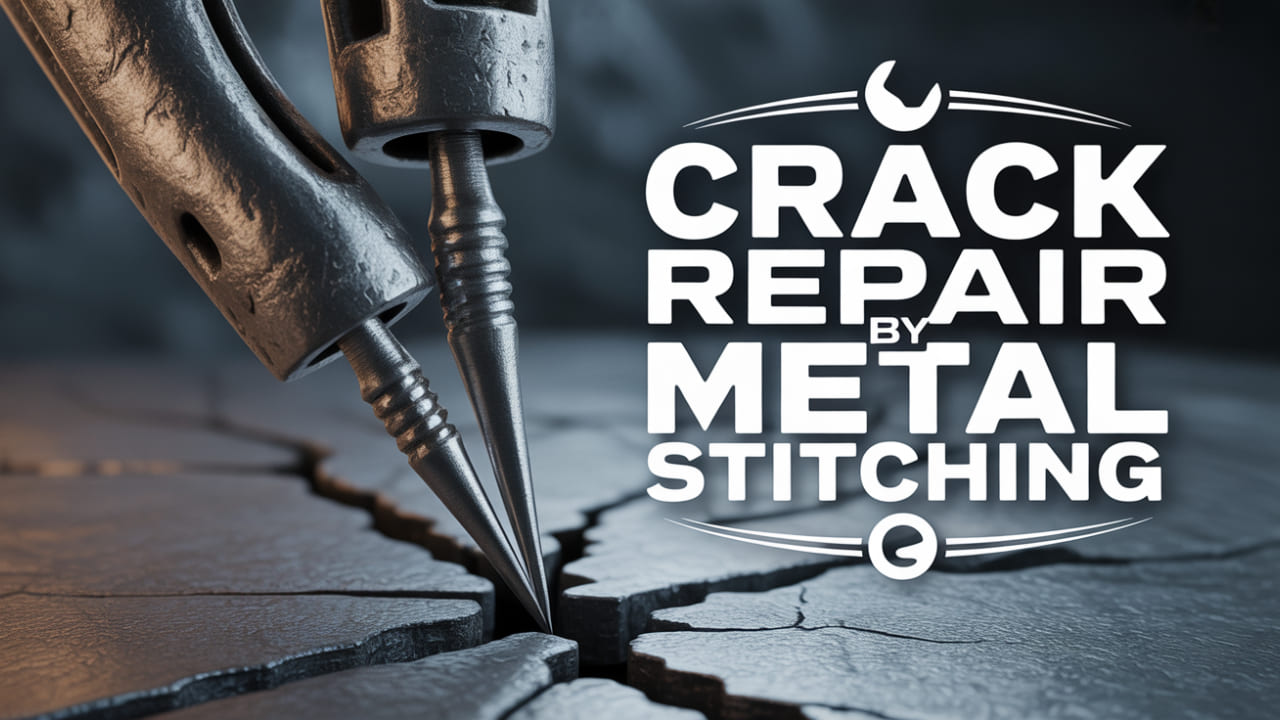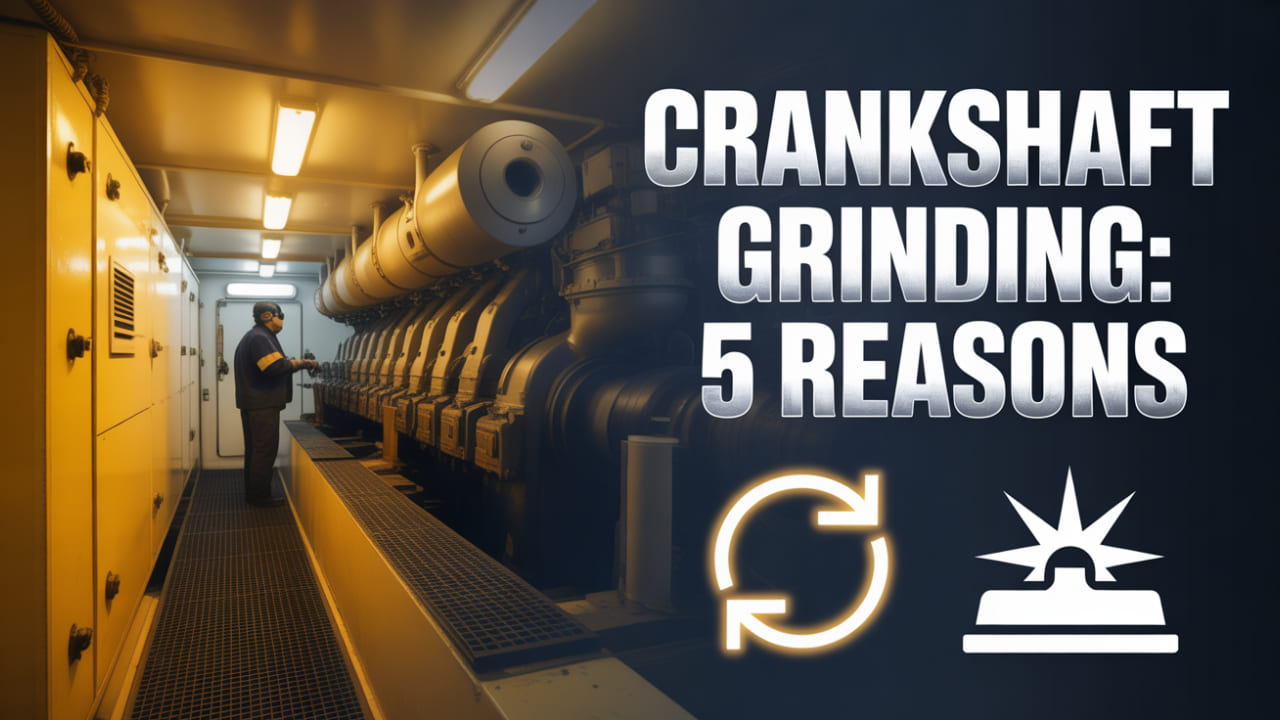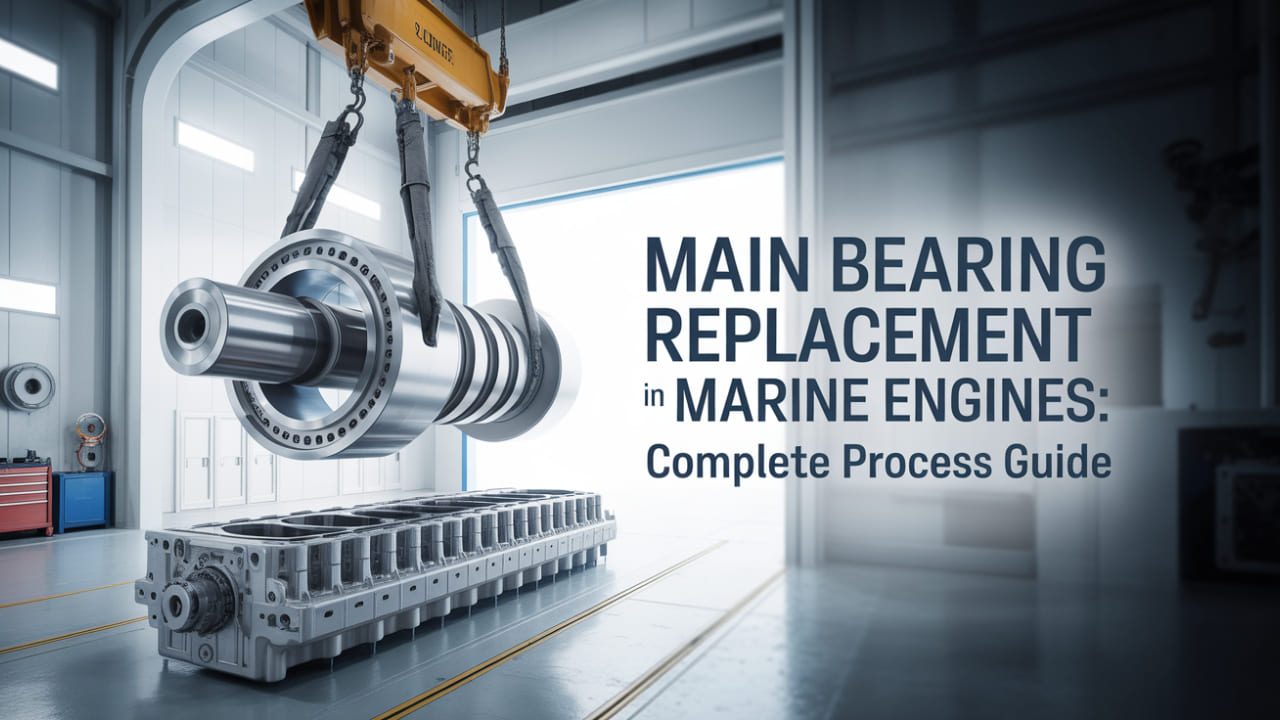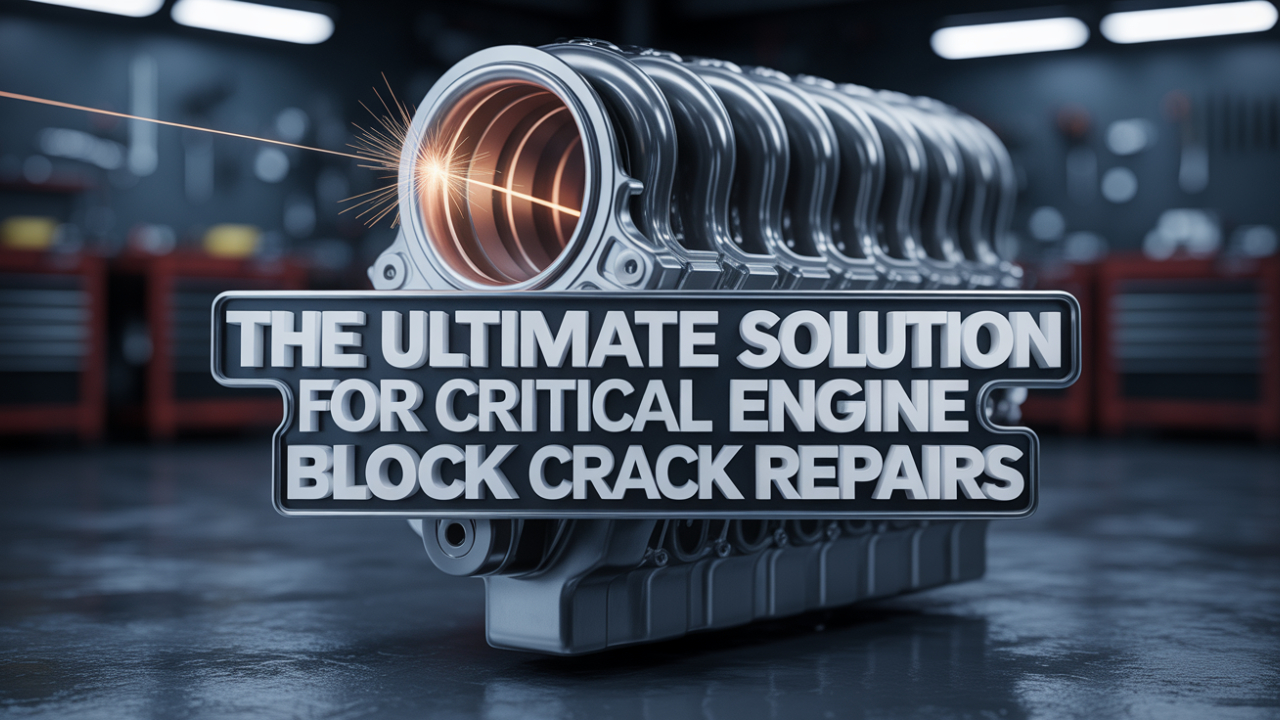Ever wondered what keeps your car running so smoothly? The answer is simple– your car’s crankshaft. It is basically your engine’s heart, when the crankshaft is damaged, your engine’s heart skips a beat. But how to repair it when it’s damaged?
In this blog we will discuss how you can spot the crankshaft issues, explore repair options, and weigh costs. Also, how you can keep the engine performing at its best efficiency and reliability.
What Is a Crankshaft and Why Is It Critical to Your Engine?
A crankshaft is one of the main components of your engine. It converts the pistons’ up-and-down motion into rotational energy, driving the vehicle’s wheels. It synchronises the engine timing, supports combustion power transfer, and ensures there is a smooth performance.
If your crankshaft isn’t working properly, that means your engine cannot generate motion or maintain mechanical balance effectively. Now, you know how important it is to have a properly working crankshaft.
Common Signs That Your Crankshaft May Be Damaged:
If you detect these common signs that your crankshaft is having issues, you can save a lot on major repairs. Here are some common signals that you should never neglect, and watch out for:
1. Knocking Noise:
Knocking noise is one of the common signals when your crankshaft is on the verge of getting entirely damaged. A deep knocking sound is a common indication that your crankshaft bearings are worn out and need an instant replacement.
2. Oil Leaks:
When the seal around your crankshaft is severely damaged, you will find oil leaking from the crankshaft.
3. Low Oil Pressure:
The worn-out bearings and cracks on the crankshaft can disrupt oil flow, leading to low oil pressure.
4. Engine Vibrations:
Even a slight bent or imbalance in the crankshaft position can lead to irregular and undesirable vibrations in the engine.
5. Difficulty Starting The Engine:
When your crankshaft is severely damaged, it often leads to problems starting the engine. You might also find a severely damaged crankshaft lacking proper ignition or compression.
If you notice any of these signs, stop your vehicle. Stop driving your vehicle immediately, and get your vehicle inspected at the earliest.
What Causes Crankshaft Damage?
A damaged crankshaft is a major problem, backed by several issues that we often neglect.Well, engine crankshaft damage is often related to poor maintenance or extreme engine stress:
1. Oil Starvation:
It is when your vehicle asks for oil, but you neglect its needs. If you run your engine with low or dirty engine oil, it leads to less friction. This, in turn, can make your engine bearings wear out at a faster rate.
2. Improper Installation:
Misalignment of bearings can cause the most damage to your crankshaft. If your bearings or seals are improperly installed or fitted during the previous repairs, it can lead to misalignment.
3. Over-Revving:
When you push your engine beyond its capacity, it is called over-revving. This is an important issue; it can lead to cracks and even warp your crankshaft.
4. Foreign Debris:
Having alien elements in your engine oil– typically, the small particles can not only score but also scratch your crankshaft journals.
5. Fatigue Over Time:
The regular wear and tear eventually weakens the crankshaft, especially in high-mileage vehicles.
Understanding what is causing your crankshaft to be damaged can help determine the right repair approach and prevent recurring problems.
Diagnosing Crankshaft Problems: What To Expect?
Let’s understand what actually happens when you bring your car to a mechanic because of crankshaft issues:
1. Visual Inspection:
Your car mechanic starts with a visual inspection. The mechanic checks whether there are any signs of visual damage or oil leaks around the crankshaft area.
2. Oil Analysis:
Then, they check whether there are any tiny alien particles in the oil. This might indicate that the engine’s bearings are wearing out or getting damaged.
3. Vibration Test:
The car engine is checked to see whether there are any abnormal vibrations or not. Abnormal vibrations are directly connected with the imbalance or bending of the crankshaft position.
4. Crankshaft Measurements:
Your car mechanic will use specialised tools to measure the journal diameters and roundness to check for wear and tear of the crankshaft.
5. Magnetic Particle Inspection (MPI):
A magnetic particle inspection (MPI) is conducted to inspect and detect whether there are any hidden cracks or surface flaws.
Once your car is done with this diagnosis, your car mechanic will recommend the best course of action: crankshaft repair or crankshaft replacement.
Crankshaft Repair Option 1: Grinding And Polishing:
Grinding and Polishing is the ideal repair option when your car’s crankshaft journals are slightly worn out, but structurally they are perfect. The crankshaft grinding process includes:
1. Grinding:
This step involves the removal of a thin layer of metal to achieve a smooth and uniform surface.
2. Polishing:
Here, we redefine the surface to ensure proper lubrication and reduce friction.
This repair option not only helps you restore the precision but also extends crankshaft life.
However, anything above the limit leads to problems. Similarly, excessive grinding can also weaken the shaft; that is why this repair option is only suitable for minor damage only. Plus, it’s also the most cost-effective repair method.
Crankshaft Repair Option 2: Welding and Machining:
Welding and machining are really helpful options if your crankshaft has undergone some deep cracks and severe scoring. The method of welding and machining involves:
1. Welding:
Welding refers to filling the cracks or damaged sections with a high-strength material.
2. Machining:
Whereas machining refers to re-shaping and re-balancing the damaged crankshaft after welding.
You might find this repair option quite complex, but this is one of the most effective ones when there is severe damage. It helps in restoring the crankshaft to near-original condition. It’s commonly used in performance engines or rare models where replacements are expensive or hard to find.
Crankshaft Repair Option 3: Complete Replacement:
Sometimes the crankshaft gets too damaged that grinding and welding repair options won’t work. That is when the last option steps in– replacement of the crankshaft with a new one. A total replacement is suggested when:
1. The cracks get extended through major journals.
2. The crankshaft is bent beyond the machining limits.
3. The bearings and connecting rods are also severely worn.
We understand replacement of crankshaft can be a costlier option, however, it ensures long-term reliability and performance. Furthermore, a new crankshaft also comes with a manufacturer’s warranty, giving peace of mind.
Factors That Influence Your Repair Decision:
We understand it’s hard to choose between repair and replacement of your crankshaft, and it depends on several different factors.
1. Extent Of Damage:
If your crankshaft has only minor cracks and damage, it only needs grinding and polishing. However, if there are deeper cracks, you might have to get the entire crankshaft replaced with a new one.
3. Availability Of Parts:
If your vehicle is old or a rare model, opting for repair might not be a practical option.
4. Budget:
If you are low on budget, consider opting for repair options. However, repairs might not last as long as new replacements.
How To Prevent Future Crankshaft Damage:
1. Change the engine oil of your vehicle at regular intervals in order to maintain proper lubrication.
2. Make sure to use good-quality oil filters in order to prevent debris from circulating.
3. Make sure you avoid over-revving and sudden accelerations.
4. Do not overlook the vibrations and unusual noises coming from the engine–address them at
the earliest.
5. Follow manufacturer service schedules to keep the crankshaft and bearings in check.
A little care goes a long way in extending your engine’s life.
Choosing The Right Mechanic For Crankshaft Repair:
The repair of your crankshaft requires professional hands with technical skills and precision. So, make sure you look for mechanics who:
1. Specialise in engine rebuilding or crankshaft services.
2. Use advanced diagnostic tools like MPI and balancing machines.
3. Offer warranties on parts and labour.
4. Have strong customer reviews or referrals.
Conclusion:
A damaged crankshaft doesn’t mean your engine is dead now– all it needs is a quick diagnosis from experts like the MPA Power Project team, the right repair method, and regular maintenance. And boom! This can not only restore performance but will also prevent costly replacements. Choose skilled mechanics, use quality oil, and prioritise inspections to keep your crankshaft and your engine running smoothly for years ahead.
Want your engine to haul like new? Connect with MPA Power Project experts today and get In-Situ grinding and specialised engine overhauling services.
FAQs:
1. How much does it cost to repair or replace a crankshaft?
– Repairing or replacing a crankshaft can cost you between ₹25,000 and ₹1,00,000, depending on the vehicle you own and the damage it has sustained.
2. Can a damaged crankshaft be repaired, or does it need to be replaced?
– If your crankshaft has minor damage, it can be repaired, but if there are severe cracks, it will usually require replacement.
3. How long does a crankshaft repair or replacement take?
– Crankshaft repair or replacement typically takes 2 to 5 days, depending on the availability of parts and workshop efficiency.
4. What are the warning signs that my crankshaft is failing?
– The warning signs of a failing crankshaft often include knocking noises, low oil pressure, metal shavings in oil, and engine vibration.
5. Is it worth repairing a crankshaft on an older vehicle?
– Repairing a crankshaft on an older vehicle is worth it only if the car’s overall condition and value justify the expense.











No Comments